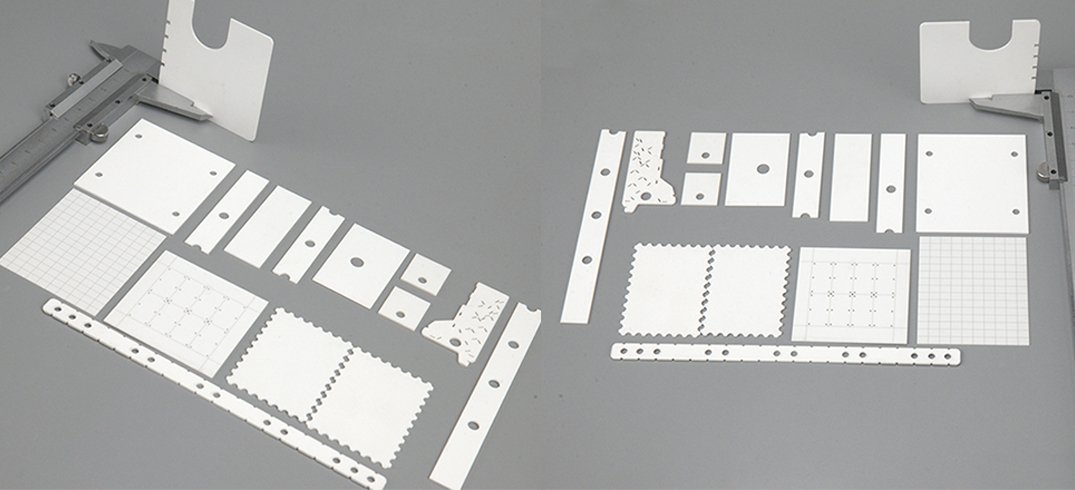In the field of industrial ceramics, 95% alumina ceramic and 99% alumina ceramic are two of the most commonly used materials. Both exhibit excellent mechanical strength, high-temperature resistance, corrosion resistance, and electrical insulation properties, making them widely applicable in industries such as electronics, machinery, chemical engineering, and medical devices. However, there are key differences in composition, performance, and applications between these two materials. Selecting the appropriate material is crucial to ensure that your components meet the specific requirements of your application.
1. Composition and Properties
-
95% Alumina Ceramic: As the name suggests, 95% alumina ceramic consists of 95% aluminum oxide (Al₂O₃), with the remaining 5% typically composed of other oxides such as silicon dioxide (SiO₂), calcium oxide (CaO), and magnesium oxide (MgO). These additives help reduce the sintering temperature and enhance the material’s mechanical strength.
-
99% Alumina Ceramic: 99% alumina ceramic contains more than 99% aluminum oxide, offering higher purity. This results in greater hardness, better wear resistance, and superior electrical insulation properties.

2. Key Performance Comparison
| Propriété | 95% Alumina Ceramic | 99% Alumina Ceramic |
|---|---|---|
| Alumina Content | 95% | >99% |
| Density (g/cm³) | 3.6-3.8 | 3.9-4.0 |
| Flexural Strength (MPa) | 300-350 | 350-400 |
| Vickers Hardness (GPa) | 14-16 | 16-18 |
| Dielectric Constant (1 MHz) | 9-10 | 9.5-10.5 |
| Thermal Expansion Coefficient (10⁻⁶/K) | 7-8 | 7-8 |
| Maximum Operating Temperature (°C) | 1600 | 1700 |
3. Application Areas
-
95% Alumina Ceramic: Due to its good mechanical strength, wear resistance, and lower cost, 95% alumina ceramic is widely used in:
-
Electronic component substrates
-
Joints mécaniques
-
Wear-resistant liners
-
Chemical pump valves
-
Textile ceramic parts
-
-
99% Alumina Ceramic: Owing to its higher purity, hardness, and electrical insulation properties, 99% alumina ceramic is commonly used in:
-
High-performance electronic components
-
Semiconductor manufacturing equipment
-
Precision mechanical parts
-
Medical implants
-
High-temperature furnace components
-
4. How to Choose the Right Material?
The choice between 95% alumina ceramic and 99% alumina ceramic depends on your specific application requirements. Here are some factors to consider:
-
Résistance mécanique : If your application involves high mechanical stress, 99% alumina ceramic is the better choice.
-
Résistance à l'usure : For applications requiring high wear resistance, such as mechanical seals and wear-resistant liners, 99% alumina ceramic is more suitable.
-
Isolation électrique : In high-voltage and high-frequency applications, the superior electrical insulation properties of 99% alumina ceramic are critical.
-
Coût : 95% alumina ceramic is generally more cost-effective than 99% alumina ceramic, making it a preferred choice for cost-sensitive applications.
5. Conclusion
Both 95% alumina ceramic and 99% alumina ceramic are high-performance industrial ceramic materials, each with its unique advantages and application areas. By understanding their composition, properties, and applications, you can select the most suitable material for your specific needs, ensuring optimal performance and extended service life for your components.
Our company specializes in producing various specifications of 95% alumina ceramic and 99% alumina ceramic components. Contact us for more information!
Contact Us:https://vhandy.com/contact-us/

